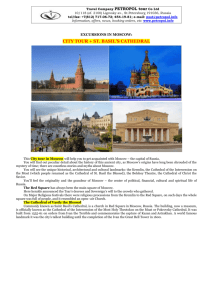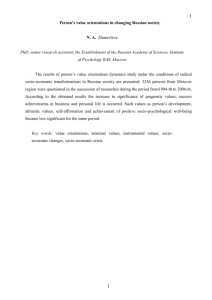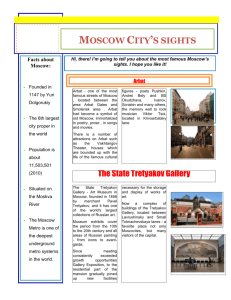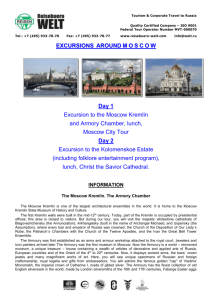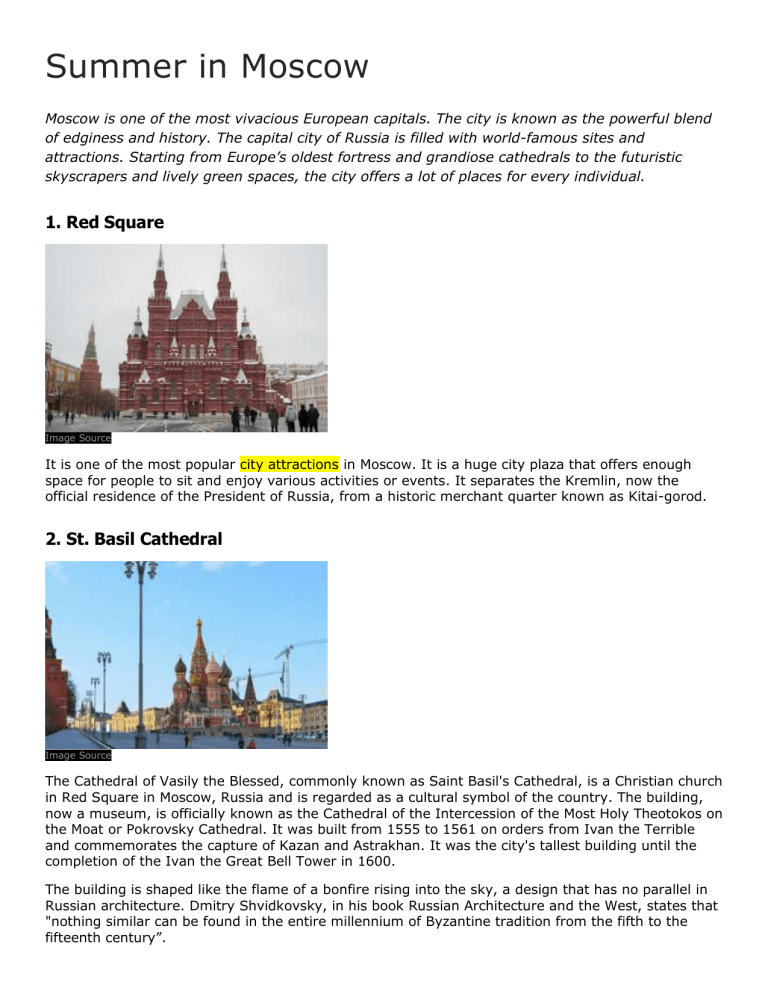
Summer in Moscow Moscow is one of the most vivacious European capitals. The city is known as the powerful blend of edginess and history. The capital city of Russia is filled with world-famous sites and attractions. Starting from Europe’s oldest fortress and grandiose cathedrals to the futuristic skyscrapers and lively green spaces, the city offers a lot of places for every individual. 1. Red Square Image Source It is one of the most popular city attractions in Moscow. It is a huge city plaza that offers enough space for people to sit and enjoy various activities or events. It separates the Kremlin, now the official residence of the President of Russia, from a historic merchant quarter known as Kitai-gorod. 2. St. Basil Cathedral Image Source The Cathedral of Vasily the Blessed, commonly known as Saint Basil's Cathedral, is a Christian church in Red Square in Moscow, Russia and is regarded as a cultural symbol of the country. The building, now a museum, is officially known as the Cathedral of the Intercession of the Most Holy Theotokos on the Moat or Pokrovsky Cathedral. It was built from 1555 to 1561 on orders from Ivan the Terrible and commemorates the capture of Kazan and Astrakhan. It was the city's tallest building until the completion of the Ivan the Great Bell Tower in 1600. The building is shaped like the flame of a bonfire rising into the sky, a design that has no parallel in Russian architecture. Dmitry Shvidkovsky, in his book Russian Architecture and the West, states that "nothing similar can be found in the entire millennium of Byzantine tradition from the fifth to the fifteenth century”. 3. Moscow Kremlin Image Source I WeIt is a big architectural complex that attracts the visitors from all over the world. There are a lot of cathedrals, towers and palaces to see. The walls of Kremlin were built in the 15th century using beautiful designs. It contains 20 towers, and the tallest tower is Troizkaya, as it is 73 meters high. The cathedral is located in the center of this complex and has a magnificent architecture. 4. State Tretyakov Gallery Image Source The gallery's history starts in 1856 when the Moscow merchant Pavel Mikhailovich Tretyakov acquired works by Russian artists of his day with the aim of creating a collection, which might later grow into a museum of national art. In 1892, Tretyakov presented his already famous collection of approximately 2,000 works (1,362 paintings, 526 drawings, and 9 sculptures) to the Russian nation. It was built in 1902–04 to the south from the Moscow Kremlin. During the 20th century, the gallery expanded to several neighboring buildings, including the 17th-century church of St. Nicholas in Tolmachi. The collection contains more than 130,000 exhibits, ranging from Theotokos of Vladimir and Andrei Rublev's Trinity to the monumental Composition VII by Wassily Kandinsky and the Black Square by Kazimir Malevich. In 1977 the Gallery kept a significant part of the George Costakis collection. 5. Bolshoi Theatre Image Source The Bolshoi Theatre is a historic theatre in Moscow, Russia, originally designed by architect Joseph Bové, which holds ballet and opera performances. Before the October Revolution it was a part of the Imperial Theatres of the Russian Empire. The Bolshoi Ballet and Bolshoi Opera are amongst the oldest and most renowned ballet and opera companies in the world. It is by far the world's biggest ballet company, with more than 200 dancers.The theatre is the parent company of The Bolshoi Ballet Academy, a world-famous leading school of ballet. It has a branch at the Bolshoi Theater School in Joinville, Brazil. The main building of the theatre, rebuilt and renovated several times during its history, is a landmark of Moscow and Russia (its iconic neoclassical façade is depicted on the Russian 100-ruble banknote). On 28 October 2011, the Bolshoi re-opened after an extensive six-year renovation.The official cost of the renovation is 21 billion rubles ($688 million). However, other Russian authorities and other people connected to it claimed much more public money was spent. 6. Kolomenskoye Kolomenskoye village was first mentioned in the testament of Ivan Kalita (1339). As time went by, the village was developed as a favourite country estate of grand princes of Muscovy. The earliest existing structure is the exceptional Ascension church (1532), built in white stone to commemorate the long-awaited birth of an heir to the throne, the future Ivan the Terrible. Being the first stone church of tent-like variety, the uncanonical "White Column" (as it is sometimes referred to) marked a stunning break from the Byzantine tradition.

